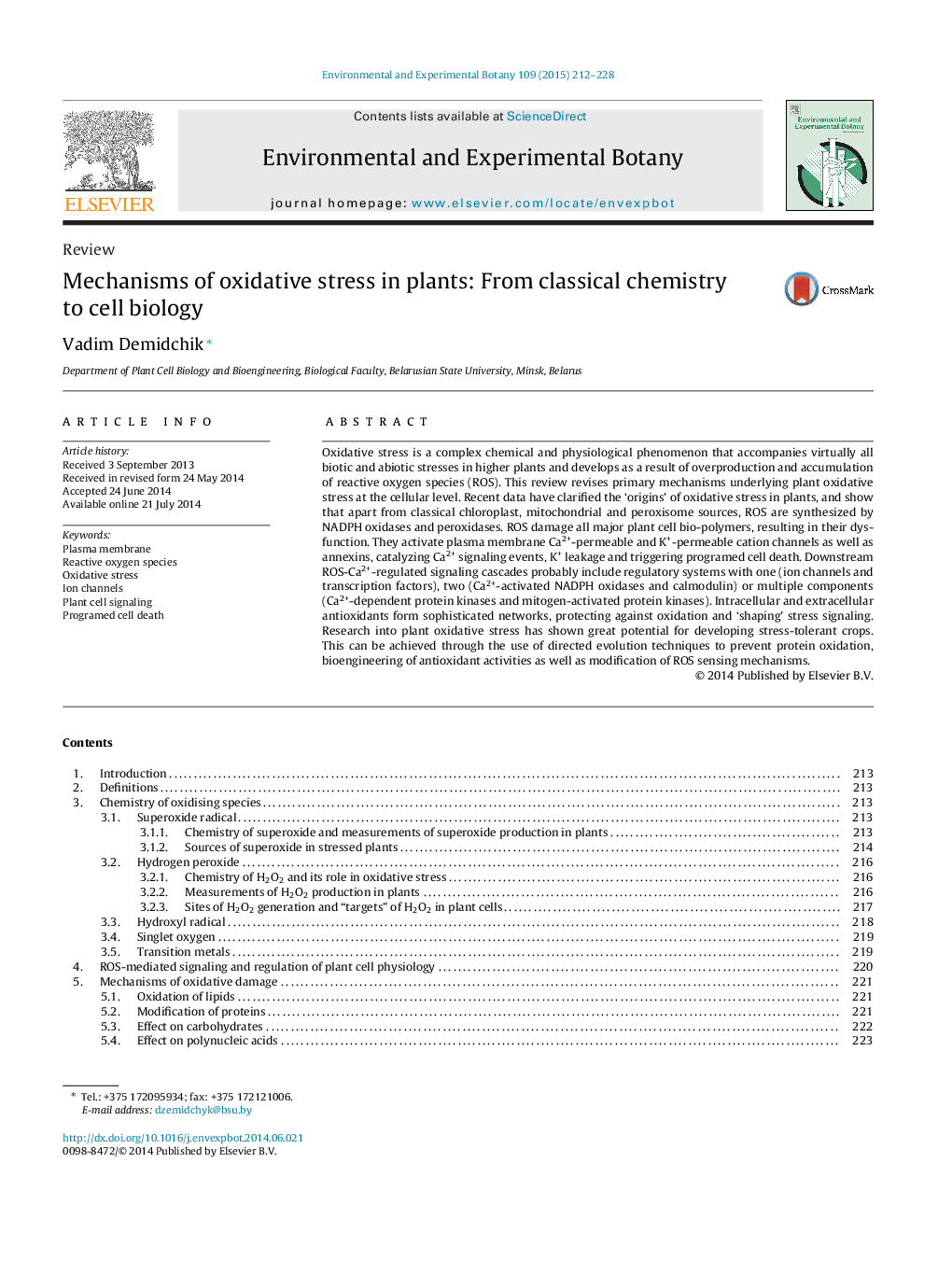| کد مقاله | کد نشریه | سال انتشار | مقاله انگلیسی | نسخه تمام متن |
|---|---|---|---|---|
| 4554335 | 1628068 | 2015 | 17 صفحه PDF | دانلود رایگان |
• Properties and biosynthesis of major reactive oxygen (ROS) species are discussed.
• A special focus is on ROS signaling and sensing mediated by cation channels.
• Novel mechanism of ROS-induced programed cell death is proposed.
• Mechanisms of oxidative damages and antioxidant protection are summarised.
Oxidative stress is a complex chemical and physiological phenomenon that accompanies virtually all biotic and abiotic stresses in higher plants and develops as a result of overproduction and accumulation of reactive oxygen species (ROS). This review revises primary mechanisms underlying plant oxidative stress at the cellular level. Recent data have clarified the ‘origins’ of oxidative stress in plants, and show that apart from classical chloroplast, mitochondrial and peroxisome sources, ROS are synthesized by NADPH oxidases and peroxidases. ROS damage all major plant cell bio-polymers, resulting in their dysfunction. They activate plasma membrane Ca2+-permeable and K+-permeable cation channels as well as annexins, catalyzing Ca2+ signaling events, K+ leakage and triggering programed cell death. Downstream ROS-Ca2+-regulated signaling cascades probably include regulatory systems with one (ion channels and transcription factors), two (Ca2+-activated NADPH oxidases and calmodulin) or multiple components (Ca2+-dependent protein kinases and mitogen-activated protein kinases). Intracellular and extracellular antioxidants form sophisticated networks, protecting against oxidation and ‘shaping’ stress signaling. Research into plant oxidative stress has shown great potential for developing stress-tolerant crops. This can be achieved through the use of directed evolution techniques to prevent protein oxidation, bioengineering of antioxidant activities as well as modification of ROS sensing mechanisms.
Journal: Environmental and Experimental Botany - Volume 109, January 2015, Pages 212–228
